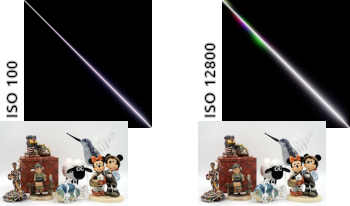
Increasingly sophisticated algorithms, including trained artificial intelligence methods, are now widely employed to enhance image quality. Unfortunately, these algorithms often produce somewhat hallucinatory results, showing details that do not correspond to the actual scene content. It is not possible to avoid all hallucination, but by modeling pixel value error, it becomes feasible to recognize when a potential enhancement would generate image content that is statistically inconsistent with the image as captured. An image enhancement algorithm should never give a pixel a value that is outside of the error bounds for the value obtained from the sensor. More precisely, the repaired pixel values should have a high probability of accurately reflecting the true scene content. The current work investigates computation methods and properties of a class of pixel value error model that empirically maps a probability density function (PDF). The accuracy of maps created by various practical single-shot algorithms is compared to that obtained by analysis of many images captured under controlled circumstances. In addition to applications discussed in earlier work, the use of these PDFs to constrain AI-suggested modifications to an image is explored and evaluated.

Stack-based high dynamic range (HDR) imaging is a technique for achieving a larger dynamic range in an image by combining several low dynamic range images acquired at different exposures. Minimizing the set of images to combine, while ensuring that the resulting HDR image fully captures the scene’s irradiance, is important to avoid long image acquisition and postprocessing times. The problem of selecting the set of images has received much attention. However, existing methods either are not fully automatic, can be slow, or can fail to fully capture more challenging scenes. In this paper, we propose a fully automatic method for selecting the set of exposures to acquire that is both fast and more accurate. We show on an extensive set of benchmark scenes that our proposed method leads to improved HDR images as measured against ground truth using the mean squared error, a pixel-based metric, and a visible difference predictor and a quality score, both perception-based metrics.